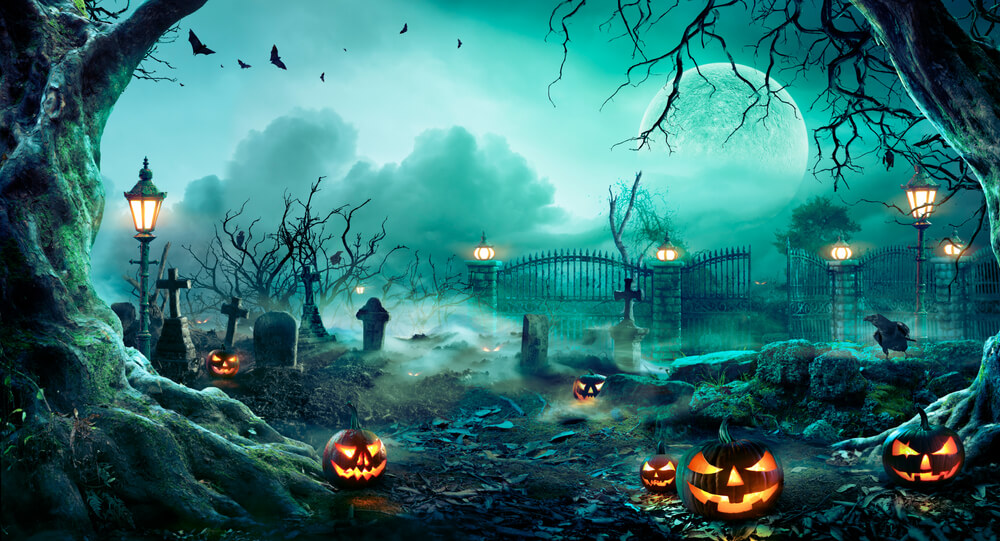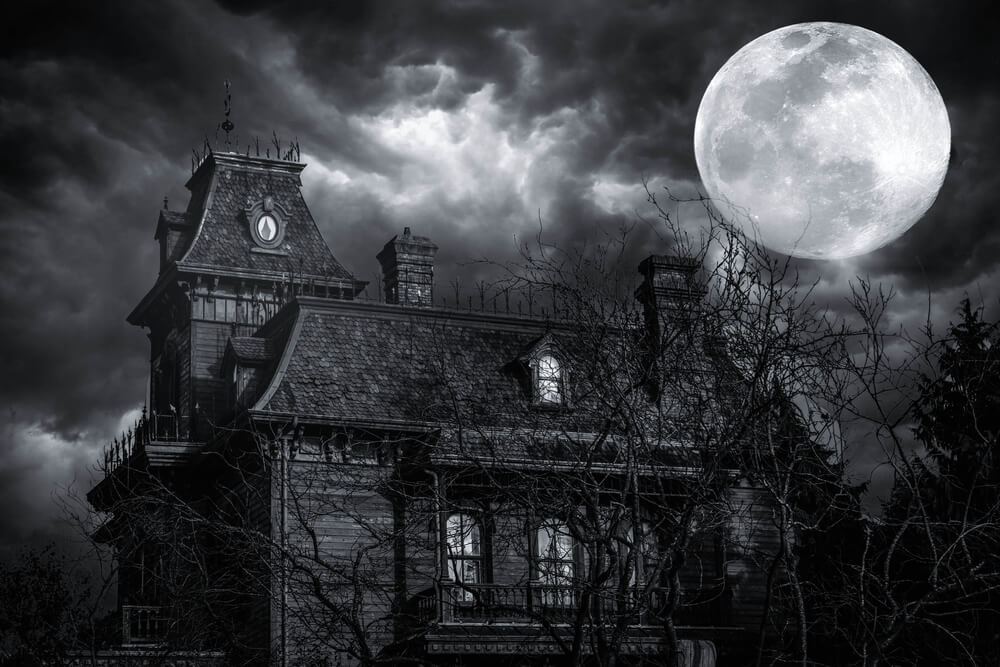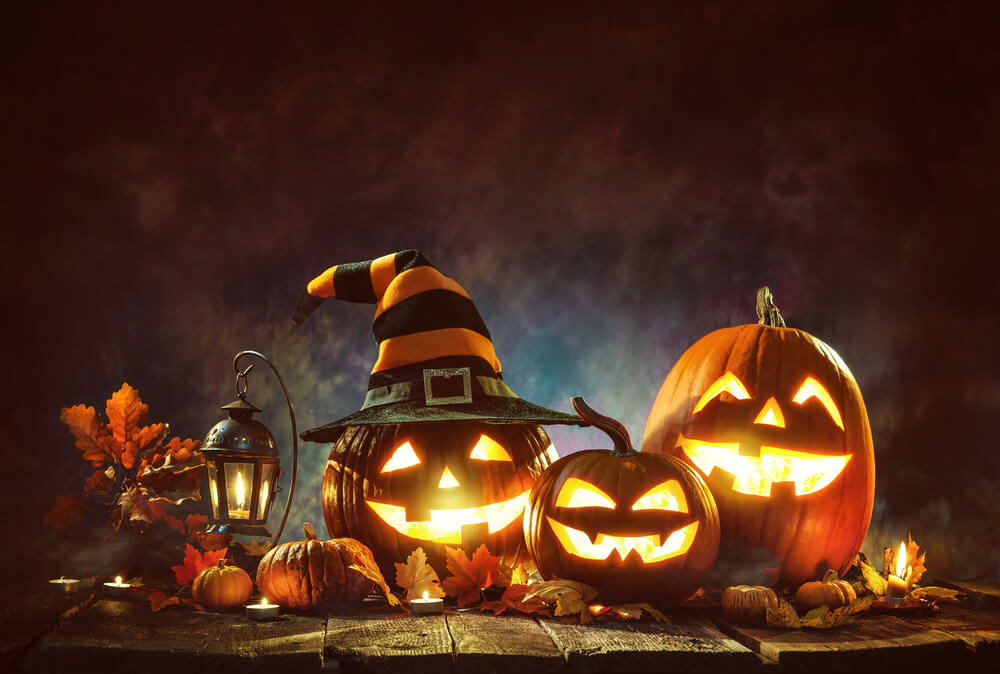What is Halloween: history and traditions of the holiday
The streets of the city are filled with the most creepy, but so beloved costumes! Children will run from house to house looking for treats, while adults will get out the decorations and decorate their homes. What is Halloween and why do we celebrate it? Reader Digest.

Photo: Shutterstock
You think you know what Halloween is, but in reality, you probably don't. It's not always about carving pumpkins and collecting candy.
Collecting candy, throwing Halloween parties, dressing up in costumes, carving faces out of pumpkins and haunted houses - that's what October 31 used to be. Over the years, this holiday has changed a lot.
If you could go back in time and observe the origin of Halloween, you wouldn't even recognize it.
So before you make a list of Halloween ideas and costumes, plan your party entertainment, make some original street decor, or brush up on the little things about the upcoming holiday.
So it would not be superfluous to dive into the real history of the origin of this ancient holiday.
What is this day
As it exists today in the United States, Halloween is a holiday where we all dive into the darker, creepier side of life and gorge ourselves on candy.
It's a lot of fun, a little scary, and not at all serious. However, historically, the holiday was of a religious nature, it was of great importance for the culture of the people who celebrated it.
The meaning of the word "Halloween"
"The word 'Halloween' is a contraction of the Scottish name 'All Hallows' Evening,' which simply describes the night before All Hallows' Day," says Brian Sterling-Veth, Ph.D., historian, Halloween expert and author of Paranormal Activity. Investigation: The Black Book of Scientific Ghost Hunting and How to Investigate the Paranormal."
On the subject: Walmart and Macy's Already Announce Black Friday Discounts: Best Promotional Deals
The first records of the holiday date back to 1555 AD.
All Saints' Day originated in the era of early Christianity. In the 13th century, Pope Gregory III moved the feast of All Martyrs' Day from May 1 to November 1000 and turned it into All Saints' Day. Then, in 2 AD, the Catholic Church added All Souls' Day on November XNUMXnd.
The evening before this day was subsequently called All Hallows Eve, and then Halloween.
Then it was a religious day, not much like a modern holiday. According to Sterling-Weth, the combination of the words "Halloween" and "holiday", as we understand it today, only became popular in 1745.
Date of celebration
In America, Halloween is always celebrated on October 31st. In Canada, they also chose this day. However, not everyone is as obsessed with this holiday as Americans.

Photo: Shutterstock
In England, Halloween is not recognized at all.
This was the result of the Protestant Reformation. Instead, almost at the same time, November 5th, to be exact, the United Kingdom celebrates a completely unrelated holiday - Guy Fawkes Day, when the effigy of this notorious traitor is burned. The holiday is also called Bonfire Day or Fireworks Day.
In Mexico, people celebrate Día de los Muertos, the Day of the Dead.
Although it runs from October 31 to November 2, it is still very different in essence from Halloween. Yes, people dress up in colorful skeleton costumes and celebrate in the streets, but the point of it all is to honor the memory of the dead and invite their spirits back to Earth, not to be afraid of them.
In honor of the holiday, people decorate the graves of their ancestors and bring food to let them know that they have not forgotten them.
Why we celebrate the holiday on October 31
The origin of Halloween dates back to Gaelic and Celtic rituals dating back at least 2000 years, from which the date and many ways of celebrating it come to us.
The Gaelic festival of Samhain was traditionally held on 1 November to mark the official end of the harvest season and the start of winter.
According to Sterling-Weth, the celebrations always began the night before on October 31, about halfway between the autumn equinox and the winter solstice.
It is based on a three-day pagan festival that the Celts celebrated on October 31 to celebrate the harvest and preparation for the "dark half of the year."
History of origin
The ancients believed that on this day the line between the living world and the spiritual kingdom was blurred, that is, ghosts from outside could visit the living, and monsters could enter people’s homes.
When celebrating, they sought to prevent as much evil as possible - they performed special rites to keep monsters, witches and evil fairies at bay.

Photo: Shutterstock
People told tales about mythological heroes and the underworld. They dressed up as monsters to ward off evil, disguise themselves and avoid being kidnapped or eaten by real monsters.
As Christianity became more popular, it added some Catholic holidays that fall on Halloween. As a result, there was a mixing of religious and pagan traditions.
Why? To facilitate the further transition from paganism to Catholicism. And it worked.
All Souls' Day included many of the attributes of Samhain, including bonfires, parades, and costumes, although people now mostly dress up as saints, angels, and devils.
Why do we celebrate Halloween
Most of us aren't afraid of being eaten by monsters and we don't feel the need to celebrate harvest festival, so why is Halloween left?
You may be interested in: top New York news, stories of our immigrants and helpful tips about life in the Big Apple - read it all on ForumDaily New York
According to Sterling-Weth, during colonial America, Halloween was not an easy task due to the strict religious beliefs of the Puritans.
However, the holiday remained popular in less religious circles as well. As more and more Europeans arrived and mixed with the Native Americans, traditions multiplied and developed.
The Halloween celebrations overlap with the fall festivals and include entertainment, song and dance, ghost stories and practical jokes.
But it wasn't until the second half of the XNUMXth century that Halloween really became popular in the United States.
Why? Irish immigrants who escaped the potato famine brought their ideas and traditions with them.
holiday transformation
In this new bizarre context, the Americans took the Celtic tradition of dressing up and turned it into what we now call "trick or treat."
By the 1930s, Halloween had become almost entirely secular, with All Saints' Day becoming a religious holiday.
But there are some pious people who categorically refuse to celebrate October 31st. For them it is a religious day (All Hallows' Eve).
In the late 2020th and early 8st centuries, Halloween began to increasingly become a matter of commerce and profit. Americans spent more than $XNUMX billion on Halloween in XNUMX alone, according to the National Retail Federation.
Halloween traditions
So how is Halloween celebrated today? Costumes, parties, toys and candy are the most popular attributes, but there are many fun traditions of this holiday. Let's take a look at some of our favorites.
carving pumpkin lanterns

Photo: Shutterstock
Around 1895, it became a tradition to carve pumpkin lanterns with hideous faces.
They were originally carved from turnips (neep) in the UK and replaced with gourds in the United States.
“When they were cut out, they turned out to be a kind of lanterns that they carried in their hands to ward off evil spirits. And in Christian folklore, they represent the soul that has been denied access to both heaven and hell,” explains Sterling-Wet.
Fortunately, we no longer carry them with us (freeing up the children's hands for more candy!)
Wallet or life
Roaming groups of costumed children going door to door asking for candy is the most sacred, age-old tradition of Halloween.
This custom is directly related to dressing up. Costumes are worn to hide from evil spirits. This tradition has its roots in Scotland in the XNUMXth century.
The phrase "trick or treat" is intended to jokingly scare homeowners and encourage them to give treats or small toys.
Decoration with skulls, skeletons and ghosts
Fake human bones often look silly on Halloween, but they are a holdover from a very serious ancient tradition. Then people believed in the spirit stored in the bones.
The use of the skull most likely belongs to the Christian tradition, symbolizing Golgotha, where Jesus was crucified.
“The skull serves as a reminder that death is always near and human existence in this world is short,” explains Sterling-Veth.
Avoid black cats, stuffed animals, witches
Ghosts or evil spirits were an integral part of the origins of Halloween, and they live on today in the form of black cats, witches and other creatures seen as an omen or personification of this evil.
Stuffed animals are used not only to scare away birds, but also evil spirits on Halloween.
Apple hunt
Harvest traditions are almost forgotten in modern Halloween celebrations (or incorporated into Thanksgiving in November), but this classic party game reminds us of our farming roots.
Apple tossing was originally a Roman party game and was associated not with Halloween but with true love.
The apples were placed in water or hung on a string and each was given the name of a single man or woman. Then the unmarried people tried to bite off the apple of the one with whom they would like to tie themselves in the knot of Hymen.
Halloween Parties
What could be more important for a holiday than a party?
Halloween parties vary in scope, from family get-togethers to school-wide parties with parades and community extravaganzas.
Parties are usually themed in the Halloween colors of black, orange and purple. They have silly or creepy decor.
Themed films and haunted houses
It wouldn't be funny if, on an ordinary day, someone holding a bloody knife chased you down an alley. So why do people look for spooky events during Halloween?
Scary situations, including these scary Halloween movies, trigger the release of adrenaline, endorphins, and dopamine—powerful chemicals in your brain that increase feelings of excitement, alertness, and pleasure.
In real life, these neurotransmitters fire up your body to fight or flee, while watching horror movies on Halloween allows us to experience these feelings, but in a completely safe place.
Read also on ForumDaily:
274 days and 150 stops: Royal Caribbean offers round-the-world cruise
Ten Ways to Protect Yourself from Scammers
Do you want more important and interesting news about life in the USA and immigration to America? — support us donate! Also subscribe to our page Facebook. Select the “Priority in display” option and read us first. Also, don't forget to subscribe to our РєР ° РЅР ° Р »РІ Telegram and Instagram- there is a lot of interesting things there. And join thousands of readers ForumDaily New York — there you will find a lot of interesting and positive information about life in the metropolis.











